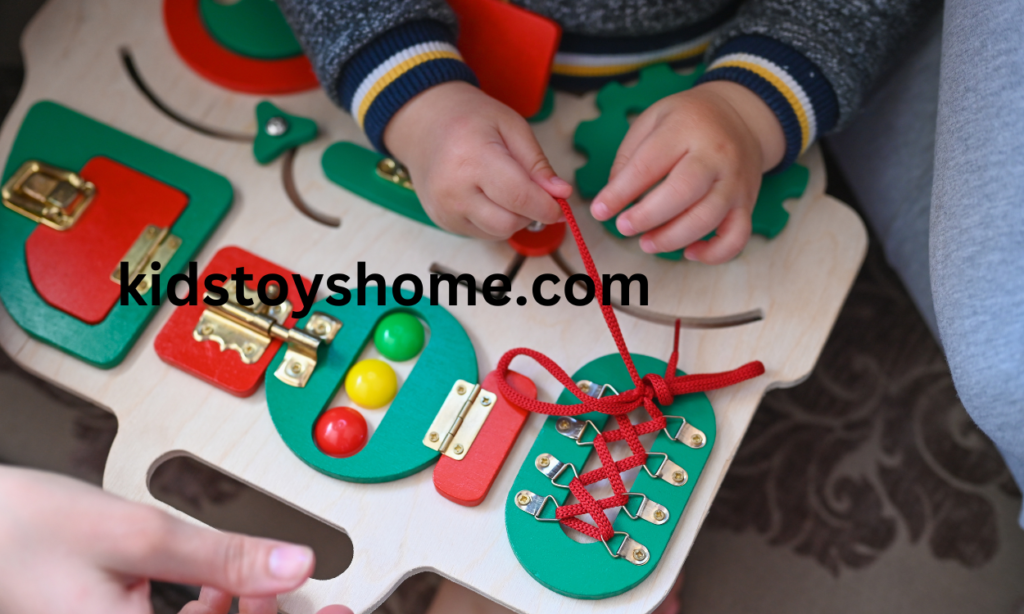The transition from mere babbling in infancy to the ability to read books is a pivotal development in a child’s life, yet the path of reading readiness is rife with challenges. Many children face obstacles in language development and early literacy skills, leaving parents and educators concerned about their future academic success. The key to navigating this complex process lies in understanding the comprehensive timeline of reading readiness in children.
By recognizing the stages of language development and the significance of pre-reading skills, we can implement effective strategies to support children on their journey from babbling to reading. Delving deeper into this topic will unveil the intricate milestones, influential factors, and valuable activities that guide a child’s progression toward becoming a proficient reader.
Join us as we explore the intricate timeline of reading readiness, offering insights and solutions to ensure every child’s transition from babbling to books is as seamless and enriching as possible.
The Stages of Early Language Development
Babbling Phase
The babbling phase marks a crucial milestone in a child’s early language development, typically emerging around 6 months of age. During this stage, infants experiment with producing sounds, learning to form vowels and consonants that lay the foundation for future speech. This period is characterized by repetitive cooing and babbling, as children begin to grasp the basics of vocalization, setting the stage for more complex language skills.
Vocabulary Development
Following the babbling phase, toddlers enter a rapid vocabulary development stage, usually between the ages of 18 to 24 months. This is where children start to assign meaning to words and actively expand their lexicon. Early words often include names for familiar people, objects, and actions. The pace at which children acquire new words can be astonishing, with some capable of learning several new words daily.
Sentence Formation
As children’s vocabulary grows, they begin to experiment with sentence formation, usually around the age of 2 to 3 years. Initial sentences are often two to three words long, allowing them to convey simple concepts and desires. This stage is crucial for grammatical development as children start understanding and applying basic syntax rules in their speech, enabling them to communicate more complex ideas and thoughts.
Pre-reading Skills and Their Significance
Pre-reading skills are the foundational abilities that children develop before they start to read in the conventional sense. These skills are crucial for reading success and include phonemic awareness, print motivation and recognition, and narrative skills and vocabulary expansion.
Phonemic Awareness involves the ability to hear, identify, and manipulate individual sounds—phonemes—in spoken words. This skill is essential for learning the relationship between sounds and their spellings, which forms the basis for reading and spelling.
Print Motivation and Recognition refers to a child’s interest in and appreciation for printed material. Children who are motivated to read are more likely to engage with books and other reading materials, recognizing print in their environment as something meaningful and important.
Narrative Skills and Vocabulary Expansion are about understanding how stories work and being able to follow along with the plot, as well as the ability to describe things and events. An enriched vocabulary aids in this understanding and allows children to express themselves more effectively, contributing to their overall reading readiness.
Together, these pre-reading skills create a strong foundation for children’s future reading development, setting the stage for successful and enjoyable literacy experiences.
Factors Influencing Reading Readiness
Home Environment
The home environment is a critical factor in a child’s reading readiness. A home filled with literacy-rich elements, such as books, magazines, and labels, naturally encourages curiosity about reading. Interactive activities, including discussing daily routines, storytelling, and singing, significantly enhance language skills. Parents and guardians play a pivotal role by modeling reading behavior, demonstrating the value of literacy, and creating a supportive atmosphere that encourages exploration and learning.
Social Interactions and Play
Social interactions and play are integral to developing reading readiness in children. Through play, children learn communication skills, develop social understanding, and practice narrative skills by creating and telling their own stories. Play-based learning in preschool settings can encourage phonemic awareness and print motivation through group activities, games, and playful exploration of letters and words. Interacting with peers and adults through play supports children in understanding the structure of language and the basics of conversation, laying a solid foundation for later reading skills.
Exposure to Reading Materials
Exposure to a variety of reading materials from an early age is essential for fostering an interest in reading and developing readiness. This includes having access to books, newspapers, signs, and digital reading platforms. Children who are frequently read to, and those who can explore texts on their own, develop a greater appreciation for stories and literacy. Libraries, book swaps, and book-centric activities represent valuable resources for parents and educators to ensure diverse and accessible reading materials for children at different stages of readiness. Regular interaction with reading materials not only builds familiarity but also significantly impacts vocabulary expansion and comprehension skills, critical components of reading readiness.
Age-Appropriate Milestones in Reading Development
Milestones from Birth to Age 3
In the earliest stages of development, children begin to exhibit signs of early literacy even before they can read. From birth to age 3, infants and toddlers engage in pre-reading behaviors that are foundational to reading readiness. They start by responding to sounds and voices, progressing to understanding simple spoken words and phrases. Babies soon begin to recognize and name familiar objects and pictures, showing interest in books by grabbing and holding them. By age 3, many toddlers can recite or sing the alphabet and recognize some letters, particularly the ones in their names, demonstrating early phonemic awareness.
Milestones for Ages 3 to 5
As children age from 3 to 5, their reading readiness skills become more pronounced. They exhibit a stronger interest in books and storytelling, often requesting their favorite stories to be read aloud multiple times. This repetition aids in vocabulary expansion and narrative skills development. Children start to recognize logos and signs, understanding that print carries meaning. They play with sounds, experiment with rhyming, and may begin to match spoken words with written ones. Recognition of their written name, alongside other frequently seen words, signifies their advancing pre-reading abilities.
Transitioning from Pre-reading to Reading
The transition from pre-reading to actual reading typically occurs around the ages of 5 to 6, coinciding with entering formal schooling. This pivotal period is marked by the child’s ability to sound out words using phonics, a fundamental shift from recognizing words purely through memorization. They begin to understand the concept of a sentence and can follow simple stories more independently. With support, children start blending sounds to form words, gradually moving towards greater fluency. This intrinsic motivation and burgeoning skill set pave the way from mere reading readiness to actual reading, fostering a life-long relationship with literacy.
Activities to Support Reading Readiness
Reading Aloud and Storytelling
Reading aloud and storytelling are pivotal in nurturing a child’s interest in books and understanding of language. These activities stimulate children’s imaginations, help them recognize sounds and words, and develop listening skills. By incorporating diverse stories that cover various cultures and topics, parents and educators can enhance children’s empathy and curiosity. Storytelling without books, using only the creativity of the storyteller, encourages the child to visualize the story in their mind, further enhancing creativity and memory retention.
Letter Recognition Games
Games that focus on letter recognition are instrumental in familiarizing children with the alphabet, which is foundational for reading. Simple activities like alphabet puzzles, matching games, or even DIY crafts that involve creating letters from clay or playdough can make learning engaging and hands-on. Digital applications designed for early learners can also offer interactive experiences that reinforce letter recognition skills while keeping children entertained.
Interactive Reading
Interactive reading transforms the reading experience from a solitary activity into an engaging, participatory event. This approach involves the adult and child discussing the story, asking and answering questions about the plot, characters, and setting as they go along. Parents and educators can encourage the child to predict what might happen next in the story or relate the events to their own experiences. Interactive reading boosts comprehension, vocabulary, and critical thinking skills, laying a strong foundation for independent reading in the future.
Challenges and Solutions in Developing Reading Skills
Common Reading Challenges in Early Childhood
Developing reading skills is a complex process that varies significantly among children. Some common challenges include difficulty in recognizing letters, struggling with phonemic awareness, and trouble in understanding the flow of text. These obstacles can stem from a range of factors, including developmental delays, lack of exposure to reading materials, and minimal engagement in literacy-related activities at home.
Strategies for Overcoming Reading Difficulties
Overcoming reading challenges requires a multifaceted approach tailored to each child’s unique needs. Key strategies include:
- Personalized Learning Plans: Customizing learning activities to meet the specific requirements of each child can significantly enhance their reading skills.
- Enhancing Phonemic Awareness: Engaging children in games and activities that focus on sound recognition and manipulation can improve their ability to understand the relationship between letters and sounds.
- Rich Literacy Environment: Creating an environment that is rich in both print and digital reading materials can stimulate interest and motivation in reading.
Role of Parents, Educators, and Therapists
The combined efforts of parents, educators, and therapists are crucial in addressing reading challenges.
- Parents can foster a love for reading by regularly reading aloud with their children, discussing stories, and providing a variety of books that match their child’s interests.
- Educators play a critical role in identifying early signs of reading difficulties and implementing effective teaching strategies to support each child’s learning.
- Therapists, including speech and language therapists, can offer specialized interventions for children with significant reading challenges, helping to develop foundational skills necessary for reading.
Together, these stakeholders form a support network that can adapt to the evolving needs of the child, ensuring a positive trajectory toward reading proficiency and a lifelong love for learning.
The Role of Digital Media in Reading Readiness
Advantages and Disadvantages
Digital media, when used judiciously, can be a powerful tool in promoting reading readiness among children. The interactivity and vivid animations offered by educational apps and e-books can make learning more engaging, enhancing children’s phonemic awareness and vocabulary. Additionally, digital platforms provide access to a vast pool of reading materials, accommodating various interests and learning paces.
However, excessive screen time can lead to diminished physical activity and cognitive overload, which may impede a child’s developmental progress. There’s also the concern that screen-based interaction might replace the invaluable human interaction and emotional bonding essential during early learning experiences.
Recommendations for Screen Time and Content
It is recommended that screen time for children aged 2 to 5 years be limited to one hour per day of high-quality programming, as advised by pediatric guidelines. Parents and educators should prioritize digital content that is interactive, educational, and age-appropriate, ensuring that it complements traditional reading methods rather than replacing them. Supervision and participation in digital learning activities can greatly enhance the educational value received by the child.
Conclusion
From the babbling phase to the development of sentence structure, early language development sets the foundation for reading readiness in children. Pre-reading skills such as phonemic awareness, print motivation, and narrative skills are crucial for a smooth transition into reading. Factors like the home environment, social interactions, and the availability of reading materials play a significant role in influencing a child’s readiness to read. Digital media, with its set of advantages and disadvantages, contributes to the modern landscape of early childhood education, offering innovative ways to encourage reading readiness.
FAQs
What is reading readiness?
Reading readiness refers to the set of skills, knowledge, and experiences that children need to be prepared for learning how to read.
What are the stages of early language development?
The stages of early language development include the babbling phase, vocabulary development, and sentence formation.
What are pre-reading skills and why are they significant?
Pre-reading skills refer to the foundational abilities needed for successful reading. They include phonemic awareness.
Why is early language development important for reading readiness?
Early language development plays a crucial role in building the foundation for reading skills. It helps children develop vocabulary, sentence structure, and phonemic awareness, which are essential for reading and comprehension.





